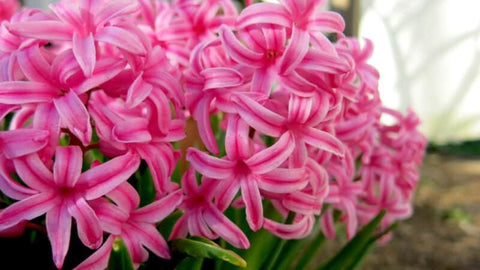Winter unfolds its icy embrace, transforming landscapes into a serene canvas of frost. Amidst this seasonal shift, an extraordinary phenomenon takes flight—the migration of birds. As temperatures drop, migratory birds embark on incredible journeys, and your winter garden can become a crucial pitstop in their quest for survival. In this blog, we explore the enchanting relationship between your winter garden and bird migration, unveiling tips on how you can transform your outdoor oasis into a haven, providing essential rest and sustenance for these winged travelers.The following content also has some reference value for raised garden beds.

Wings of Winter: A Unique Introduction
As winter's breath sweeps across the land, a subtle but profound migration symphony takes center stage. High above, birds embark on journeys that span continents, driven by an innate rhythm that transcends borders. Your garden, adorned with remnants of autumn and a promise of spring, becomes a sanctuary in this grand narrative—a vital rest stop for migratory birds navigating the vast winter sky. Join us as we unravel the delicate dance between your winter garden and the intrepid avian travelers, offering insights into how you can play a role in their extraordinary journey.
Understanding the Winter Migration Odyssey
- Global Wanderers: Migratory birds undertake incredible journeys, crossing oceans and continents. Understanding the magnitude of their odyssey adds a layer of awe to their presence in your winter garden.
- Seasonal Cycles: Migration is not a singular event but a cyclical pattern synchronized with the seasons. Birds move toward warmer regions during winter, and your garden can serve as a vital waypoint on their journey.
Tips for Creating a Winter Haven for Migratory Birds
- Strategic Planting Choices: Select plants that offer both sustenance and shelter. Evergreens provide year-round cover, while berry-producing shrubs and trees offer a natural food source for hungry travelers.
- Watering Stations: Install bird baths or shallow water features. Clean water is crucial for migratory birds, especially in regions where natural water sources may be scarce during winter.

Buffet of Nutrients: Providing Winter Feasts
- Berries and Fruits: Plant species like holly, dogwood, and winterberry that bear fruits during winter. These natural larders supply essential nutrients to birds, aiding their survival during the colder months.
- Seed-Loaded Feeders: Supplement natural forage with well-placed bird feeders. Opt for seed mixes that cater to the dietary needs of various bird species, creating a diverse and appealing menu.
Sheltering Havens: Creating Safe Spaces
- Evergreen Sanctuaries: Coniferous trees and shrubs provide not only food but also shelter. The dense foliage shields birds from harsh weather and predators, offering a safe space for resting and roosting.
- Nesting Opportunities: Ensure your garden has nesting spots. Migratory birds, even during winter, may scout for potential nesting locations. Birdhouses or sheltered nooks in trees provide inviting spaces for these transient guests.
Lighting the Way: Safe Night Navigation
- Strategic Lighting: If possible, reduce outdoor lighting during the night. Migratory birds rely on natural cues for navigation, and excessive artificial lighting can disrupt their ability to navigate, leading to disorientation.
Bird-Friendly Gardening Practices
- Limit Pesticide Use: Adopt bird-friendly gardening practices by limiting the use of pesticides. Migratory birds may be more vulnerable to the effects of chemicals, and a pesticide-free garden promotes a healthier environment.
- Natural Mulch Choices: Choose organic mulch options like shredded leaves or straw. These materials not only enrich the soil but also harbor insects, a valuable food source for foraging birds.
Citizen Science: Contributing to Bird Conservation
- Participate in Bird Counts: Join citizen science initiatives such as bird counts. Contributing your observations helps scientists understand bird migration patterns, contributing to global conservation efforts.
- Habitat Preservation: Advocate for habitat preservation in your community. Encourage the protection of natural spaces that serve as crucial stopovers for migratory birds.
Documenting Nature's Symphony: Bird Watching
- Binocular Adventures: Embrace the joy of bird watching. Equip yourself with binoculars, and let the winter garden become your personal theater for observing the graceful movements of migratory birds.
- Nature Journals: Keep a nature journal to document the species you encounter. Recording your observations not only deepens your connection to the avian world but also contributes to personal conservation awareness.
Beyond Borders: International Perspectives on Migration
- Connecting Globally: Recognize the interconnectedness of bird migration. Research and appreciate the international journeys undertaken by birds that may grace your winter garden. Understanding their global movements adds a profound dimension to your local observations.

Conclusion: Orchestrating Nature's Ballet
As winter unfurls its icy tapestry, your garden becomes a stage for nature's ballet—a delicate dance between winter's serenity and the tireless migration of birds. By cultivating a haven for these winged travelers, you not only witness the elegance of avian life but actively contribute to their survival. So, as you sip a warm drink by the window, watching the flurry of feathers and the rustle of leaves, remember that your winter garden is not just a silent witness to migration but a vital participant in the ageless rhythm of nature's symphony.









